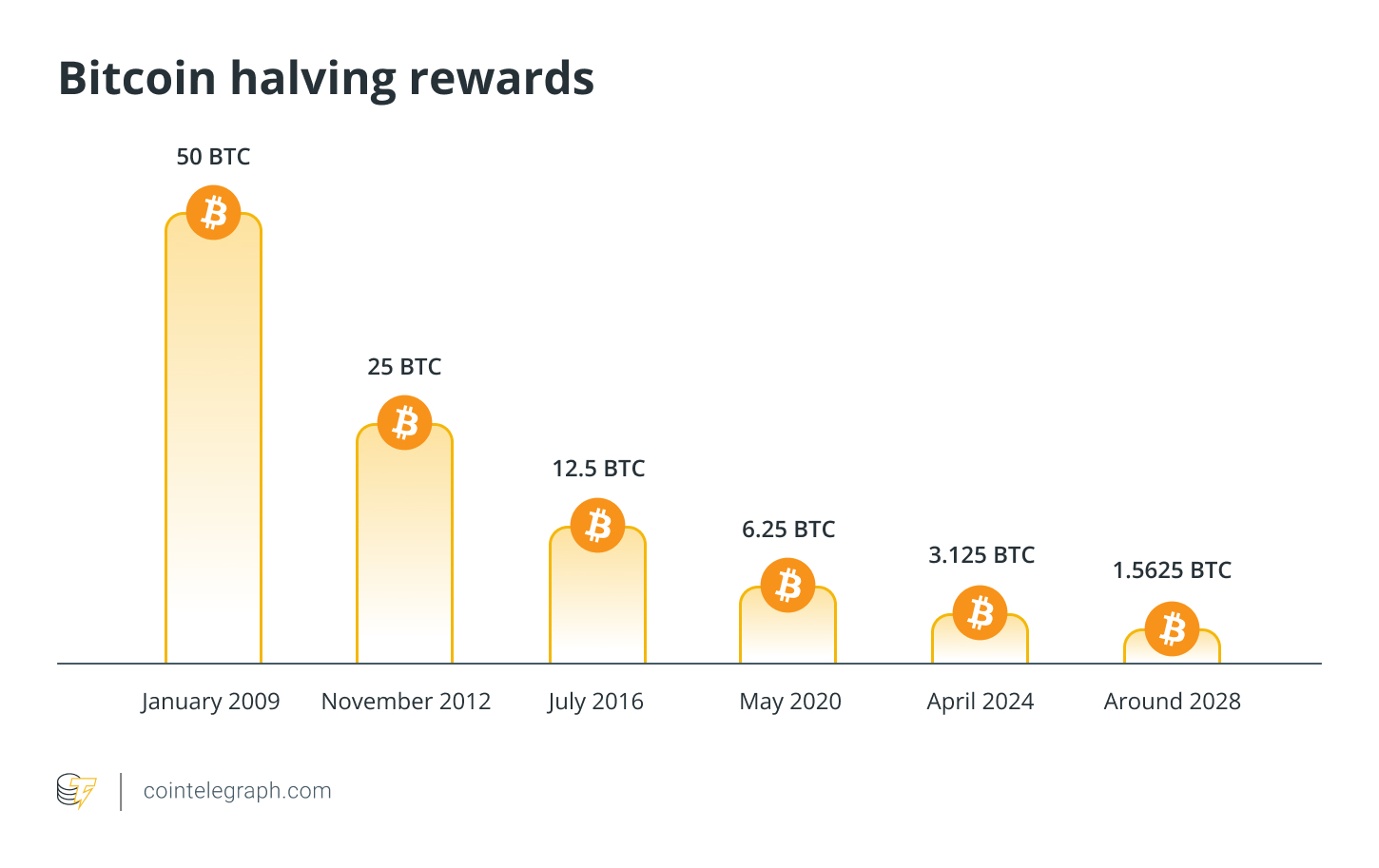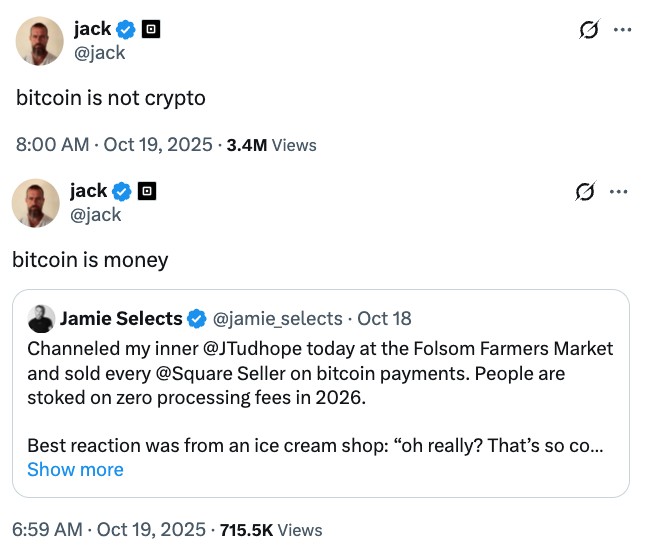
Exploring the Distinction Between Bitcoin and Crypto
The debate whether Bitcoin belongs to the cryptocurrency category is reignited by Jack Dorsey's remarks on social media.
Bitcoin Is Not ‘Crypto’
An X post from Jack Dorsey revived an old question: Is Bitcoin part of ‘crypto’ or a category of its own?
On October 19, 2025, Jack Dorsey tweeted, “bitcoin is not crypto.” This statement quickly garnered attention on social media and in news coverage, echoing his long-held belief that Bitcoin should be viewed as money with unique rules and history, distinct from other tokens in the market.
 Source: Jack Dorsey
Source: Jack Dorsey
Dorsey maintains that Bitcoin (BTC) exists in a separate category. It was launched without a foundation or premine, governed conservatively, and primarily designed for transactions and savings, setting it apart from smart contract platforms and application tokens that rapidly evolve.
Let’s analyze this stance further.
Monetary Policy and Issuance: Fixed Rules vs. Flexible Policy
Beginning with supply, Bitcoin’s issuance follows a set schedule, whereas most networks consider supply as adjustable.
New coins are introduced as block rewards, halving every 210,000 blocks until a maximum total of 21 million BTC is reached. The fourth halving occurred at block 840,000 in April 2024, reducing rewards from 6.25 BTC to 3.125 BTC.
Altering Bitcoin’s issuance requires broad social consensus, enabling investors to plan supply years ahead. This predictability underpins its reputation as a ‘store of value’. Most other networks treat monetary policy as a design option, such as Ethereum adopting EIP 1559 which dynamically adjusts supply based on demand.
Consensus and Security Budgets: PoW Minimalism vs. PoS Upgrade Velocity
The blockchain’s security model influences everything that follows. Bitcoin relies on work to secure itself, while proof-of-stake (PoS) frameworks depend on staked assets.
Bitcoin miners use energy to validate blocks, supported by a stringent set of rules. Its scripting language is deliberately simple, minimizing potential failure points and making base-layer alterations rare.
Revenue for miners is shifting from new coins to transaction fees, raising questions about long-term security during low-fee periods and highlighting the economic dynamics of networks like the Lightning Network.
In contrast, PoS networks like Ethereum allow for faster upgrades but also entail higher risks.
Governance and Culture: ‘Ossify vs. Optimize’ in Practice
Who alters the rules, how swiftly, and with what safety? Bitcoin’s slow evolution is intentional, whereas app-oriented chains focus on agility.
Proposals to change Bitcoin begin as Bitcoin Improvement Proposals, advancing only with widespread agreement among stakeholders. Unlike many platforms, no centralized authority drives these decisions, which tend to preserve backward compatibility.
What Runs on Top: Payments vs. General-Purpose Apps
Bitcoin’s base layer remains focused: its UTXO model, a limited script, and simple logic.
Most payment activities are now shifting to second-layer solutions like the Lightning Network, which facilitates low-cost transactions while preserving Bitcoin’s fundamental monetary rules.
Market Structure and What It Means: BTC’s Separate Bucket
Financial instruments like ETFs and options illustrate that institutions gauge Bitcoin differently than other cryptocurrencies.
On January 10, 2024, the SEC approved exchanges listing and trading spot Bitcoin exchange-traded products, introducing Bitcoin to mainstream trading platforms like the NYSE.
This distinction in treatment supports Dorsey’s assertion that Bitcoin deserves a separate classification in the financial landscape.



